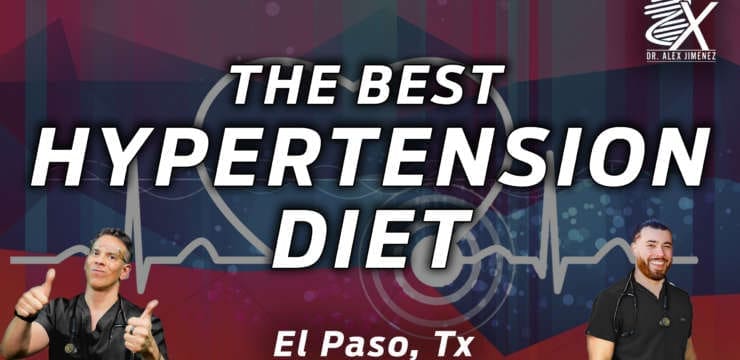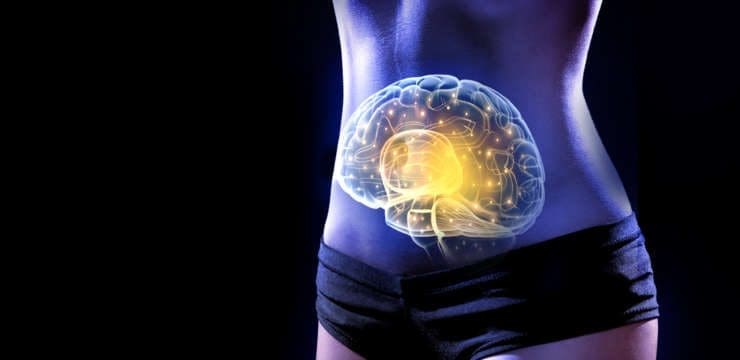
Table of Contents
Gut–Skin Axis: A Health Coach’s Guide to Skin Wellness from Within

Healthy skin isn’t just about creams or what you put on your face. What you eat, how you manage stress, and the balance of microbes in your gut can all play huge roles. As a health coach, you can help clients understand and apply the science behind the gut–skin axis, enabling their skin (and whole body) to feel and look better.
This guide explains how an imbalanced gut microbiome (dysbiosis) can hurt skin through inflammation, oxidative stress, and a weakened skin barrier. It demonstrates what health coaches can do — through diet, lifestyle modifications, stress reduction, and supportive supplementation — to help clients improve skin conditions such as acne, eczema, and premature aging.
The Gut–Skin Axis: What It Is
- Gut microbiome: trillions of microbes (bacteria, fungi, etc.) living in the digestive tract. They help digest food, support immunity, produce certain vitamins, and generate byproducts (such as short-chain fatty acids) that promote health. (PMC)
- The skin barrier and skin microbiome: the skin is also an ecosystem. It protects us from pathogens, dehydration, and environmental insults. Healthy skin has a barrier made of lipids, proteins, and a balanced microbiome. When that barrier is disrupted, moisture is lost, and irritants can get in. (Gut Microbiota for Health)
These two systems (gut and skin) are connected via immune signals, metabolism, and even via inflammation. If the gut is out of balance, its effects can be visible on the skin. (PMC)
How Gut Imbalance Harms Skin
When the gut microbiome is imbalanced (dysbiosis), several harmful things can happen:
- Increased inflammation: bad bacteria or microbial byproducts can trigger immune responses. Those responses can be systemic (throughout the body), and show up in skin as redness, swelling, pimples, flare-ups of eczema or psoriasis. (PMC)
- Higher oxidative stress: oxidative stress refers to the presence of more “free radicals” that damage cells. When gut health is poor, antioxidant defenses may be lower, which can accelerate the aging process, leading to skin wrinkles and dullness. (MDPI)
- Weakened skin barrier: if the gut barrier is leaky, toxins and microbes can enter the bloodstream, increasing inflammation. Also, a lack of beneficial microbial byproducts (like short-chain fatty acids) means less support for both gut lining and skin barrier repair. Once the skin barrier is compromised, moisture loss and irritation increase. (MDPI)
- Manifestations:
- Acne is often tied to inflammation, hormonal imbalances, and oxidative stress.
- Eczema, also known as atopic dermatitis, is linked to immune dysregulation and barrier dysfunction.
- Psoriasis is often characterized by chronic inflammation and immune overactivation.
- Premature aging: fine lines, loss of elasticity, uneven tone. (MDPI)
What Research Tells Us
Here are key findings health coaches can use to help clients:
- Human studies show that probiotics and prebiotics (foods or supplements that feed beneficial microbes) can reduce the severity of inflammatory skin conditions. (PMC)
- Dietary fiber (plant foods, vegetables, legumes) boosts production of short-chain fatty acids in the gut, which help reduce inflammation and support barrier integrity. (PMC)
- Clinical trials suggest that interventions targeting gut microbiota (diet, probiotics, lifestyle) help with psoriasis, rosacea, and acne. (ScienceDirect)
How Health Coaches Can Help Clients Restore Skin via Gut Health
Health coaches are well-positioned to guide clients through sustainable changes. Here are strategies and tools coaches can use.
1. Assessment & Education
- Ask about gut health history: digestion issues (bloating, constipation/diarrhea), antibiotic use, diet patterns, stress, and sleep.
- Get skin history: acne, eczema, psoriasis, flare-ups, reaction to foods or stress.
- Explain the gut-skin axis in simple terms: how what happens in digestion and in gut microbes can affect skin through inflammation and barrier health.
2. Dietary Guidance
- Emphasize fiber-rich foods, such as whole fruits, vegetables, legumes, and whole grains. Fiber helps feed good bacteria.
- Include prebiotic foods, such as bananas, onions, garlic, asparagus, and Jerusalem artichokes.
- Include probiotic foods such as sauerkraut, kefir, yogurt, and kimchi. When using supplements, opt for high-quality strains backed by scientific evidence.
- Reduce foods that promote inflammation, such as high-sugar, processed foods, and excessive refined carbohydrates.
3. Lifestyle & Stress Management
- Encourage stress reduction: mindfulness, breathing exercises, meditation, yoga. Stress increases cortisol, affects the gut barrier, and promotes inflammation.
- Sleep hygiene: aim for consistent, restful sleep. Skin and gut both repair during sleep.
- Hydration: drinking enough water supports digestion and skin moisture.
- Movement: regular physical activity supports circulation, gut motility, and the reduction of inflammation.
4. Supplementation (with professional input)
- Probiotic supplements (with evidence for skin conditions; ideally under guidance).
- Vitamins and minerals: Vitamin D, Zinc, Omega-3 fatty acids, antioxidants like Vitamin C, and polyphenols.
- Possibly prebiotic fiber supplements if the diet alone is insufficient.
5. Skin Care Support
- Use gentle cleansers; avoid harsh soaps that disrupt the skin’s microbiome.
- Moisturizers to support the lipid barrier.
- Protection from environmental stressors (sun, pollution).
Sample Coaching Plan
Here’s a sample 8-week plan a health coach might adapt for a client:
| Week | Focus Area | Actions |
|---|---|---|
| 1 | Baseline & Habit Tracking | Record food diary (what, when), gut symptoms, skin photos; measure sleep, stress levels. |
| 2 | Increase Fiber & Prebiotics | Add more vegetables/fruits, include prebiotic foods daily; reduce sugar/refined carbs. |
| 3 | Introduce Probiotics | Add fermented food; if using a supplement, choose one strain with good evidence. |
| 4 | Stress & Sleep Routines | Implement a sleep schedule; practice daily mindfulness for 5-10 minutes; reduce evening screen time. |
| 5 | Hydration & Skin Care | Increase water intake; switch to gentle skin products; avoid over-washing. |
| 6 | Supportive Supplements | Based on client baseline—Vitamin D, Zinc, Omega-3s; check with health provider. |
| 7 | Movement & Recovery | Add gentle movement/exercise, including stretching or yoga, with a focus on rest and recovery. |
| 8 | Review & Adjust | Re-assess skin photos, gut symptoms, energy; adjust diet/supplements/lifestyle based on what worked. |
Tips for Sustained Results
- Consistency: Changes in gut microbiome and skin barrier take time; clients need to stick with habits.
- Personalization: Everyone responds differently; coach for what feels real for the person.
- Support & Accountability: Weekly check-ins help with adherence.
- Patience with skin healing: Skin turnover takes weeks; improvements may be gradual.
- When to refer: Severe skin disease, or if there is evidence of systemic illness, practitioners should consider medical or dermatology partners.
Conclusion
The gut–skin axis provides valuable insights for enhancing skin health from the inside out. An imbalance in the gut can manifest as inflammation, oxidative stress, and a weakened skin barrier, leading to conditions such as acne, eczema, premature aging, and more. Health coaches play a crucial role in guiding clients to make daily, sustainable changes, including adopting a better diet (with increased fiber, prebiotics, and probiotics), managing stress, making lifestyle shifts, and incorporating supportive supplementation.
By helping clients address root causes, rather than just surface symptoms, health coaches can support long-term skin wellness — resulting in glowing, resilient, and healthy skin.
References
-
Gao, T., Wang, Z., Dong, H., Chen, Y., & Zhao, W. (2023). The gut–skin axis in health and disease. Frontiers in Immunology, 14, 10385652. doi.org/10.3389/fimmu.2023.10385652
-
Gut Microbiota for Health. (2023). The gut–skin axis: Feel it in your gut, wear it on your skin. Gut Microbiota for Health.
-
López, M. F. S., Camargo, F., Arrieta, M. C., & Belkaid, Y. (2025). Relationship between skin and gut microbiota dysbiosis in skin inflammation. Current Research in Microbial Science, 6, 1000072. doi.org/10.1016/j.crmicr.2025.1000072
-
Munteanu, C., Olejniczak-Staruch, I., Wo?niak, A., & Zdanowska, N. (2025). Unraveling the gut–skin axis: The role of microbiota in dermatological diseases. Cosmetics, 12(4), 167. doi.org/10.3390/cosmetics12040167
-
Nirvana Healthcare. (2024). Gut health and skin conditions connection. Nirvana Healthcare Group.
Disclaimers
Professional Scope of Practice *
The information herein on "Gut Microbiome Skin Balance: A Complete Guide" is not intended to replace a one-on-one relationship with a qualified health care professional or licensed physician and is not medical advice. We encourage you to make healthcare decisions based on your research and partnership with a qualified healthcare professional.
Blog Information & Scope Discussions
Welcome to El Paso's wellness blog, where Dr. Alex Jimenez, DC, FNP-C, a board-certified Family Practice Nurse Practitioner (FNP-C) and Chiropractor (DC), presents insights on how our team is dedicated to holistic healing and personalized care. Our practice aligns with evidence-based treatment protocols inspired by integrative medicine principles, similar to those found on dralexjimenez.com, focusing on restoring health naturally for patients of all ages.
Our areas of chiropractic practice include Wellness & Nutrition, Chronic Pain, Personal Injury, Auto Accident Care, Work Injuries, Back Injury, Low Back Pain, Neck Pain, Migraine Headaches, Sports Injuries, Severe Sciatica, Scoliosis, Complex Herniated Discs, Fibromyalgia, Chronic Pain, Complex Injuries, Stress Management, Functional Medicine Treatments, and in-scope care protocols.
Our information scope is limited to chiropractic, musculoskeletal, physical medicine, wellness, contributing etiological viscerosomatic disturbances within clinical presentations, associated somato-visceral reflex clinical dynamics, subluxation complexes, sensitive health issues, and functional medicine articles, topics, and discussions.
We provide and present clinical collaboration with specialists from various disciplines. Each specialist is governed by their professional scope of practice and their jurisdiction of licensure. We use functional health & wellness protocols to treat and support care for the injuries or disorders of the musculoskeletal system.
Our videos, posts, topics, subjects, and insights cover clinical matters, issues, and topics that relate to and directly or indirectly support our clinical scope of practice.*
Our office has reasonably attempted to provide supportive citations and has identified the relevant research studies or studies supporting our posts. We provide copies of supporting research studies available to regulatory boards and the public upon request.
We understand that we cover matters that require an additional explanation of how they may assist in a particular care plan or treatment protocol; therefore, to discuss the subject matter above further, please feel free to ask Dr. Alex Jimenez, DC, APRN, FNP-BC, or contact us at 915-850-0900.
We are here to help you and your family.
Blessings
Dr. Alex Jimenez DC, MSACP, APRN, FNP-BC*, CCST, IFMCP, CFMP, ATN
email: coach@elpasofunctionalmedicine.com
Licensed as a Doctor of Chiropractic (DC) in Texas & New Mexico*
Texas DC License # TX5807
New Mexico DC License # NM-DC2182
Licensed as a Registered Nurse (RN*) in Texas & Multistate
Texas RN License # 1191402
ANCC FNP-BC: Board Certified Nurse Practitioner*
Compact Status: Multi-State License: Authorized to Practice in 40 States*
Graduate with Honors: ICHS: MSN-FNP (Family Nurse Practitioner Program)
Degree Granted. Master's in Family Practice MSN Diploma (Cum Laude)
Dr. Alex Jimenez, DC, APRN, FNP-BC*, CFMP, IFMCP, ATN, CCST
My Digital Business Card






